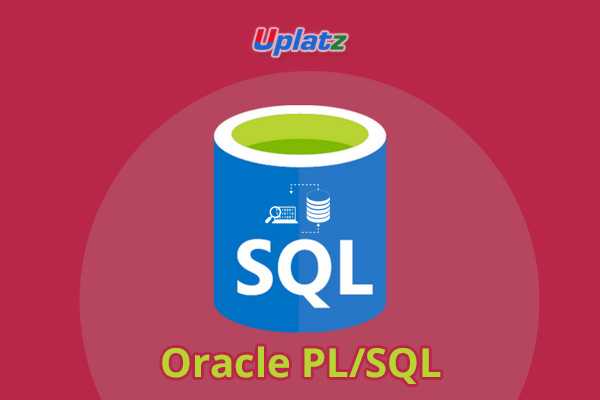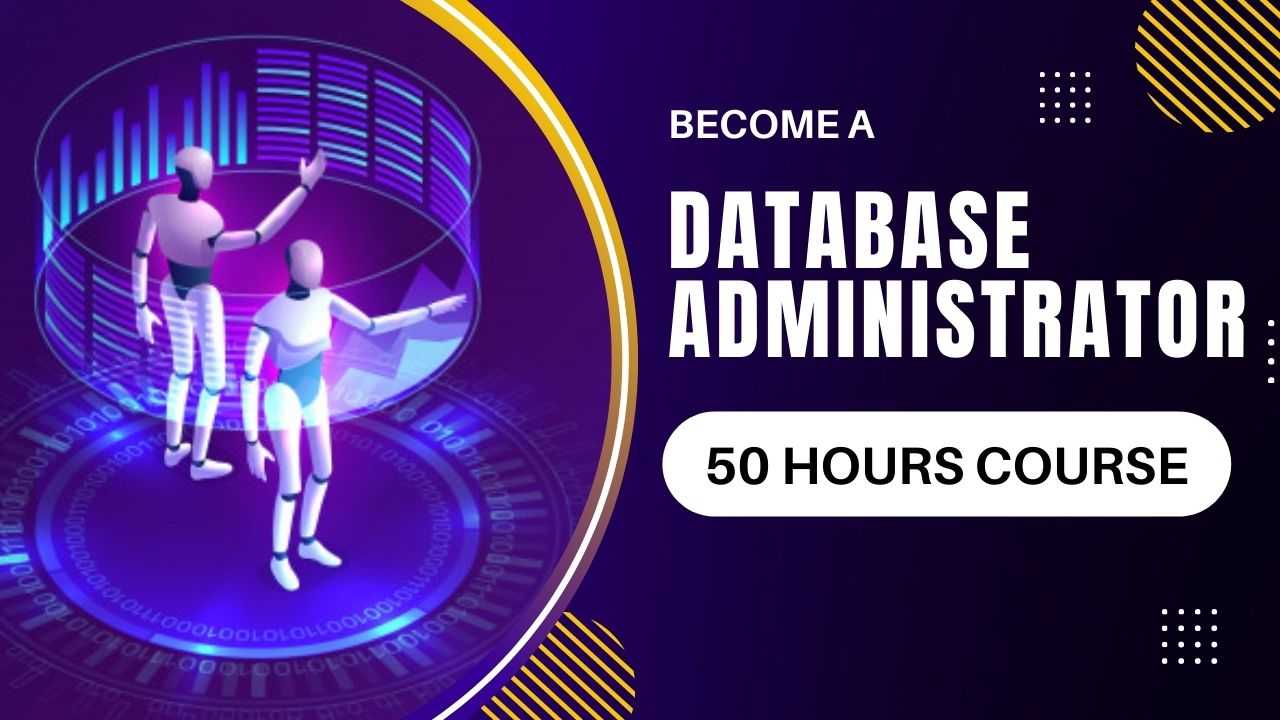SQL Programming with MySQL Database
You will learn concepts of SQL programming & MySQL database. You’ll learn how to communicate with relational databases and build complex SQL queries.Preview SQL Programming with MySQL Database course
View Course Curriculum Price Match Guarantee Full Lifetime Access Access on any Device Technical Support Secure Checkout Course Completion Certificate 71% Started a new career
BUY THIS COURSE (GBP 29)
71% Started a new career
BUY THIS COURSE (GBP 29)
-
 88% Got a pay increase and promotion
88% Got a pay increase and promotion
Students also bought -
-

- Career Path - Database Manager
- 150 Hours
- GBP 99
- 146 Learners
-

- Oracle PL/SQL
- 8 Hours
- GBP 29
- 723 Learners
-

- Career Path - Database Administrator
- 50 Hours
- GBP 99
- 255 Learners

SQL is the standard language for Relational Database System. SQL is the abbreviation of Structured Query Language. All the Relational Database Management Systems (RDMS) like MySQL, MS Access, Oracle, Sybase, Informix, Postgres and SQL Server, use SQL as their standard database language. In SQL programme, you get a clear idea of what Structured Query Language is and how you deploy SQL to work with a relational database system.
SQL is a standard language for storing, manipulating and retrieving data in databases. Learning SQL programming is valuable for our career and might help to increase our incomes but most importantly it will be the best investment you will make for yourself. However, beginners don’t know the exact starting point to begin learning the SQL language. Learning SQL depends entirely on your effort and desire, and other things are just details. This article will give some tips on how to learn SQL without going into technical details so that so you can get started in learning SQL right now. In summary, SQL is a special-purpose programming language designed for managing data in a relational database, and is used by a huge number of apps and organizations.
SQL, in its simplest definition, is used to manipulate, store and retrieve data from the relational database systems and it is pronounced as “ess-que-el”. In 1970, Edgar F. Codd invented the relational database model for the database systems, and then Dr. Donald Chamberlin and his colleagues have developed a Structured English Query Language which is an ancestor of today’s modern database query languages. SQL was standardized by the American National Standards Institute (ANSI) in 1986.
MySQL is developed, marketed and supported by MySQL AB. It is the most popular Open Source Relational SQL Database Management System and one of the best RDBMS being used for developing various web-based software applications. It handles a large subset of the functionality of the most expensive and powerful database packages. It is very friendly to PHP, the most appreciated language for web development. MySQL is a database system used on the web and is ideal for both small and large applications. MySQL is very fast, reliable, and easy to use, uses standard SQL, and compiles on a number of platforms. MySQL is the most popular database system used with PHP and is free to download and use.
In this SQL Programming and MySQL course by Uplatz, you'll learn the core concepts of the SQL programming language. You'll learn how to use SQL to store, query, and manipulate data. Learn how to request data from a server, limit and sort the responses, aggregate data from multiple tables with joins, and edit and delete data. The SQL course will then show you the basics of creating tables and selecting data in various different ways. You'll learn important concepts associated with relational databases. You will run SQL commands to create database tables and define data element types.
By the end of this course you should have a good understanding of the SQL programming language. In this SQL Programming course you will learn complete end-to-end concepts on SQL, MySQL and how to do SQL Programming with MySQL Database. In this course, you’ll learn to use Structured Query Language (SQL) to extract and analyze data stored in databases. You’ll first learn to extract data, join tables together, and perform aggregations. Then you’ll learn to do more complex analysis and manipulations using subqueries, temp tables, and window functions. By the end of the course, you’ll be able to write efficient SQL queries to successfully handle a variety of data analysis tasks.
Course/Topic - SQL Programming with MySQL Database - all lectures
-
In this video get an in-depth introduction to the terminology, concepts, and skills you need to understand database objects, administration, security, and management tools. Plus, explore T-SQL scripts, database queries, and data types
-
In this video learn basic of SQL Programming and overview the SQL basic commands and how we use these commands in SQL Programming. This SQL tutorial will teach you basics on how to use SQL in MySQL, SQL Server, MS Access, Oracle, Sybase, Informix, Postgres, and other database systems.
-
In this video we talk about DDL (DATA DEFINATION LANGUAGE) and also cover all the basic techniques of DDL.In this video we will learn about the SQL commands – DDL, DML, DCL; SQL Constraints – Keys, Not Null, Check , Default, and also MYSQL Hands-on and basic Querying
-
In this video session we learn SQL commands and how to use these commands like select command, insert command, delete command etc. In this video we will learn about hands-on experience on the terminal, creating database, Tables and manipulating data.
-
In this video we learn about SQL Basic and Aggregate Functions and also cover different functions of SQL. This tutorial teaches us about clauses and the update command. We will also cover making records, updating and modifying rows.
-
In this session we talk about SQL Regular Expression and we also cover all techniques of SQL Regular Expression.This tutorial teaches us about clauses and the update command. We will also cover making records, updating and modifying rows and EML commands.
-
In this video we learn about SQL Comparison Clauses and how we use Comparison Clauses in SQL. This tutorial covers Comparison Operators by relating values by a mathematical symbol which is used to compare two values. Learn about comparison operators result - TRUE, FALSE, or UNKNOWN
-
In this session we learn about SQL String and also cover all types of string in SQL and how we can use SQL Strings. In this video we will learn about the basic string functions such as concat_ws, file format, and insert function, L-case, u case, and lower case. We will also learn about basic functions such as upper functions.
-
In this session we cover advance level string function and also cover all different commands we use in SQL String Function. This video is a sequel for string functions tutorial. In this tutorial we will learn few most useful string functions such as spaces and null issue as well, L-Pad command.
-
In this SQL String function part 3 we learn select Repeat function and Select Replace function and also cover different between Select Repeat function and Select Replace function. This tutorial is another sequel to string functions, however, these functions are used less and not used that frequently. We will further learn here about the repeat function, absolute function, ceiling, and floor and down functions.
-
In this session we learn about SQL Numeric Functions and how we use Numeric functions in SQL. In this video, we will be covering numerical functions. Learn about the basic date functions and also about truncate functions.
-
In this video session we learn about SQL Numeric Function and also cover the basic functionality of SQL Numeric Function. SQL Data Functions. In this video we will learn about few more Date functions. We will further look into the day function option as well. This tutorial covers basic querying over a single table.
-
: In this video we talk about SQL Joins Introduction and Demonstration and basic join’s function and how to make table using joins. In this tutorial learn about joints in SQL. This tutorial teaches us how to connect two different tables with joints. We will also cover the topic of querying two or more tables and about subquery .
-
In this lecture last session we talk about MySQL Workbench and procedures and Views and MySQL Workbench functionality. In this tutorial learn about SQL in automating things. This tutorial covers stroll procedure, functions and views which are helpful for automation purposes in SQL.
a).Overview of MySQL and PHPMyAdmin.
b).Understand basic concepts of how a database stores information via tables.
c).Understanding of SQL syntax used with MySQL.
d).Learn how to retrieve and manipulate data from one or more tables.
e).Know how to filter data based upon multiple conditions.
f). Understand how MySQL works
g).Learn to use SQL to output reports with MySQL
h).Learn to modify MySQL data with SQL
i).Learn to create a simple MySQL database
j).Learn to create simple work with Views and Stored Procedures in MySQL
k).Learn to create tables in MySQL
SQL Programming with MySQL Database - Course Syllabus
1. Basics of Databases
-
a).Data Models and basic terminologies
-
b).Advantages and disadvantages of DBMS
2. SQL Basic Understanding
-
a).What is SQL?
-
b).What SQL Can do?
-
c).SQL Process
-
d).ACID Properties
-
e).What is ER Model?
-
f).Best Practices
-
g).Database Normalization
3. Introduction to SQL
-
a).SQL Commands
-
b).SQL Constraints
-
c).Types of Keys
-
d).MySQL Hands-on
4. SQL Basic Commands with demonstration
5. Basics and Aggregation Functions
6. Regular Expression Functions
7. SQL Comparison Clauses
-
a).exists
-
b).not exists
-
c).create table like
-
d).case when
-
e).NULL Functions
8. SQL String Functions
9. SQL Numerical Function
10. Introduction to Date Functions
11. SQL Joins – Introduction and demonstration
12. Introduction MySQL Workbench
13. Stored Procedures and Views
The SQL Programming with MySQL Database Certification ensures you know planning, production and measurement techniques needed to stand out from the competition.
MySQL is a relational database management system (RDBMS) developed by Oracle that is based on structured query language (SQL). A database is a structured collection of data. It may be anything from a simple shopping list to a picture gallery or a place to hold vast amounts of information in a corporate network.
MySQL is a relational database management system that uses SQL. SQL is primarily used to query and operate database systems. MySQL allows you to handle, store, modify and delete data and store data in an organized way. SQL does not support any connector.
SQL certifications generally rely on some self-paced training and an exam. “For most SQL certifications, you can take classroom-based training, online training, or just purchase the materials and self-study to prepare for the exam(s) required to earn the certification,” Hatter said.
Uplatz online training guarantees the participants to successfully go through the SQL Programming with MySQL Database Certification provided by Uplatz. Uplatz provides appropriate teaching and expertise training to equip the participants for implementing the learnt concepts in an organization.
Course Completion Certificate will be awarded by Uplatz upon successful completion of the SQL Programming with MySQL Database online course.
The SQL Programming with MySQL Database draws an average salary of $130,000 per year depending on their knowledge and hands-on experience.
Structured query language database administrators (SQL DBAs) are in high demand and yield high salaries. Their work is dynamic and challenging, though it can be stressful. SQL DBAs manage an organization's data using the database language SQL.
Established companies prefer to hire someone with a degree in a computer science field, experience and knowledge of their industry, and appropriate certifications. Companies prefer to hire those who have experience in the version of SQL used in the industry.
Note that salaries are generally higher at large companies rather than small ones. Your salary will also differ based on the market you work in.
a).MSQL Data base Developer.
b).SR. Data base Developer.
c).Data base back office.
Q1.What is MySQL?
Ans-MySQL is a database management system for web servers. It can grow with the website as it is highly scalable. Most of the websites today are powered by MySQL.
Q2. What are some of the advantages of using MySQL?
Ans-
- a).Flexibility: MySQL runs on all operating systems
- b).Power: MySQL focuses on performance
- c).Enterprise-Level SQL Features: MySQL had for some time been lacking in advanced features such as subqueries, views, and stored procedures.
- d).Full-Text Indexing and Searching
- e).Query Caching: This helps enhance the speed of MySQL greatly
- f).Replication: One MySQL server can be duplicated on another, providing numerous advantages
- g).Configuration and Security
Q3. What do you mean by ‘databases’?
Ans-A database is a structured collection of data stored in a computer system and organized in a way to be quickly searched. With databases, information can be rapidly retrieved.
Q4. What does SQL in MySQL stand for?
Ans-The SQL in MySQL stands for Structured Query Language. This language is also used in other databases such as Oracle and Microsoft SQL Server. One can use commands such as the following to send requests from a database:
SELECT title FROM publications WHERE author = ' J. K. Rowling’;
Note that SQL is not case sensitive. However, it is a good practice to write the SQL keywords in CAPS and other names and variables in a small case.
Q5.What does a MySQL database contain?
Ans-A MySQL database contains one or more tables, each of which contains records or rows. Within these rows are various columns or fields that contain the data itself.
Q6.How can you interact with MySQL?
Ans-There are three main ways you can interact with MySQL:
- a).using a command line
- b).via a web interface
- c).through a programming language
Q7.What are MySQL Database Queries?
Ans-A query is a specific request or a question. One can query a database for specific information and have a record returned.
Q8.What are some of the common MySQL commands?
|
Command |
Action |
|
ALTER |
To alter a database or table |
|
BACKUP |
To back-up a table |
|
\c |
To cancel Input |
|
CREATE |
To create a database |
|
DELETE |
To delete a row from a table |
|
DESCRIBE |
To describe a table's columns |
|
DROP |
To delete a database or table |
|
EXIT(ctrl+c) |
To exit |
|
GRANT |
To change user privileges |
|
HELP (\h, \?) |
Display help |
|
INSERT |
Insert data |
|
LOCK |
Lock table(s) |
|
QUIT(\q) |
Same as EXIT |
|
RENAME |
Rename a Table |
|
SHOW |
List details about an object |
|
SOURCE |
Execute a file |
|
STATUS (\s) |
Display the current status |
|
TRUNCATE |
Empty a table |
|
UNLOCK |
Unlock table(s) |
|
UPDATE |
Update an existing record |
|
USE |
Use a database |
Q9. How do you create a database in MySQL?
Ans-Use the following command to create a new database called ‘books’:
CREATE DATABASE books;
Q10.How do you create a table using MySQL?
Ans-Use the following to create a table using MySQL:
CREATE TABLE history (
author VARCHAR(128),
title VARCHAR(128),
type VARCHAR(16),
year CHAR(4)) ENGINE InnoDB;
Q11. How do you Insert Data Into MySQL?
Ans-The INSERT INTO statement is used to add new records to a MySQL table:
INSERT INTO table_name (column1, column2, column3,...)
VALUES (value1, value2, value3,...)
If we want to add values for all the columns of the table, we do not need to specify the column names in the SQL query. However, the order of the values should be in the same order as the columns in the table. The INSERT INTO syntax would be as follows:
INSERT INTO table_name
VALUES (value1, value2, value3, ...);
Q12. How do you remove a column from a database?
Ans-You can remove a column by using the DROP keyword:
ALTER TABLE classics DROP pages;
Q13. How to create an Index in MySQL?
Ans-In MySQL, there are different index types, such as a regular INDEX, a PRIMARY KEY, or a FULLTEXT index. You can achieve fast searches with the help of an index. Indexes speed up performance by either ordering the data on disk so it's quicker to find your result or, telling the SQL engine where to go to find your data.
Example: Adding indexes to the history table:
ALTER TABLE history ADD INDEX(author(10));
ALTER TABLE history ADD INDEX(title(10));
ALTER TABLE history ADD INDEX(category(5));
ALTER TABLE history ADD INDEX(year);
DESCRIBE history;
Q14. How to Delete Data From a MySQL Table?
Ans-In MySQL, the DELETE statement is used to delete records from a table:
DELETE FROM table_name
WHERE column_name = value_name
Q15.How do you view a database in MySQL?
Ans-One can view all the databases on the MySQL server host using the following command:
mysql> SHOW DATABASES;









